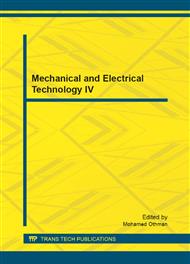p.2753
p.2760
p.2765
p.2770
p.2775
p.2779
p.2784
p.2789
p.2793
Airline Revenue Management: Optimization Using Origin-Destination Strategy Controlled by Nested Heuristics
Abstract:
Effective revenue management practice can be the single most important factor in distinguishing between success and failure of an airline and spell the difference between profitability and loss for a particular flight. This paper deals with usage of Deterministic Linear Program to optimize the network as a whole and uses LINGO to solve the DLP as it has 120 variables and 127 constraints and is impossible to solve manually. Optimization strategies taken into consideration are: Leg Based Expected Margins, Seat Revenue (EMSR), and Deterministic Linear Program (DLP). In the seat inventory control process Nested Heuristics is used for an improved and accurate result.
Info:
Periodical:
Pages:
2775-2778
Citation:
Online since:
November 2012
Authors:
Keywords:
Price:
Сopyright:
© 2012 Trans Tech Publications Ltd. All Rights Reserved
Share:
Citation:


